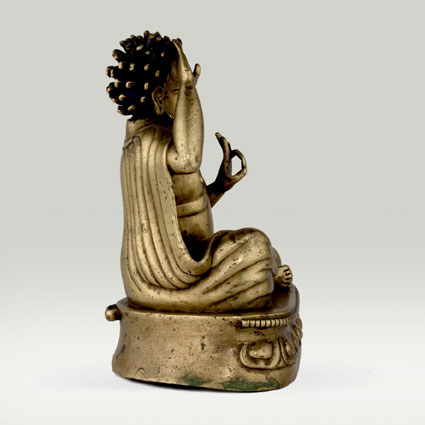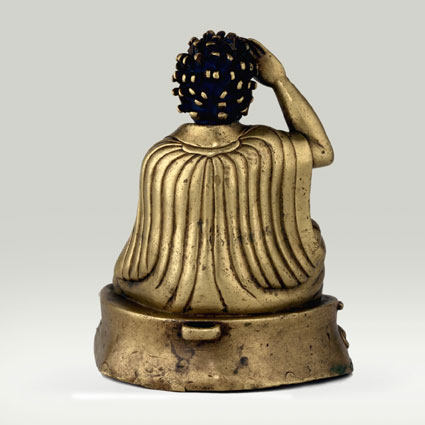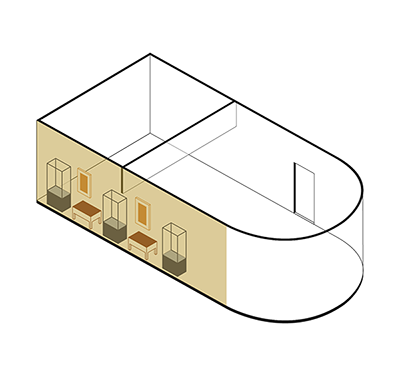ABS 108
Code: ABS 108
Country: Tibet
Style:
Date: 1200 - 1300
Dimensions in cm WxHxD: 10.1 x 13 x 7.1
Materials: Brass
Mahasiddha Dampa Sangye?
Seated with his legs loosely crossed in the ease posture on a circular lotus pedestal, this yogin master upholds his right hand turned outward to his forehead while holding his left in front of his chest with his thumb and ring finger forming a circle. Naked, he is only dressed with a cloth covering his legs and his shoulders, and he is devoid of any ornament. His head is covered with long curly locks of hair standing upright, and his bearded face displays the features of an Indian master. Although the statue has no inscription, his unusual gesture resembles that of some representations of the Indian master Dampa Sangye (†1117). This mahasiddha came to Tibet and was, among other, the teacher of the yogini Machik Labdrön (see ABS 252).
Mahasiddhas or “Great accomplished one” are yogic masters of India and Tibet endowed with psychic abilities and spiritual powers, and leading an unconventional lifestyle. The tradition attributes the tantras to the Mahasiddhas. The tantras are the founding literature of Vajrayana, the esoteric form of Buddhism.
Seated with his legs loosely crossed in the ease posture on a circular lotus pedestal, this yogin master upholds his right hand turned outward to his forehead while holding his left in front of his chest with his thumb and ring finger forming a circle. Naked, he is only dressed with a cloth covering his legs and his shoulders, and he is devoid of any ornament. His head is covered with long curly locks of hair standing upright, and his bearded face displays the features of an Indian master. Although the statue has no inscription, his unusual gesture resembles that of some representations of the Indian master Dampa Sangye (†1117). This mahasiddha came to Tibet and was, among other, the teacher of the yogini Machik Labdrön (see ABS 252).
Mahasiddhas or “Great accomplished one” are yogic masters of India and Tibet endowed with psychic abilities and spiritual powers, and leading an unconventional lifestyle. The tradition attributes the tantras to the Mahasiddhas. The tantras are the founding literature of Vajrayana, the esoteric form of Buddhism.






